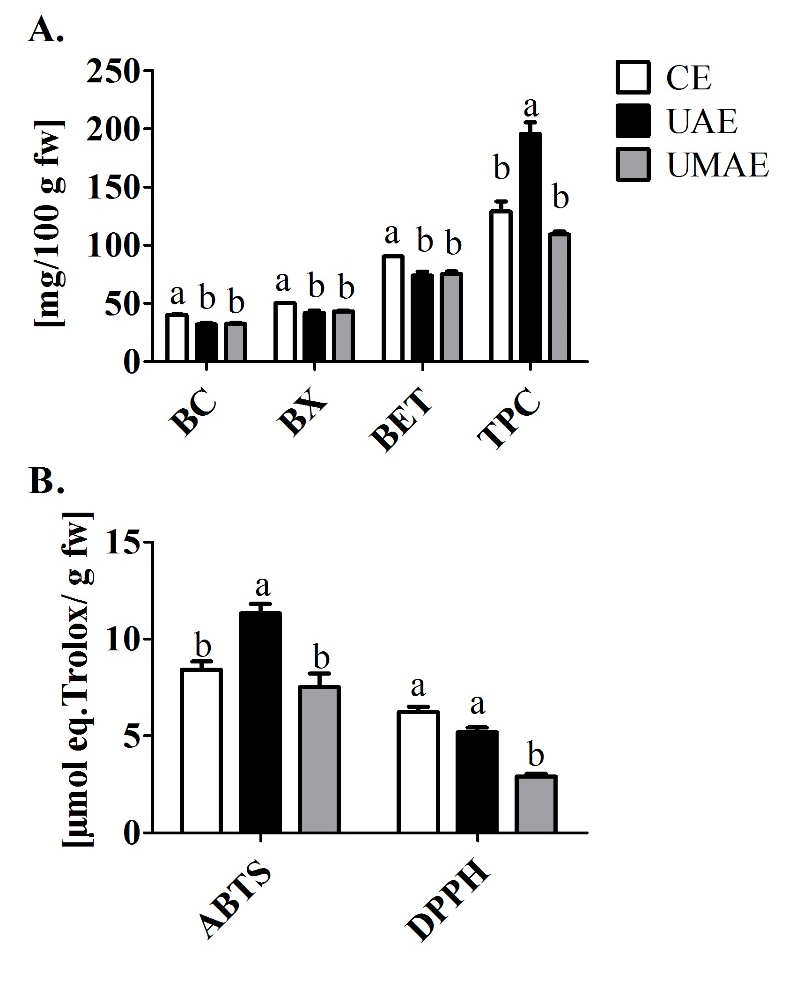 |
|
There is a growing interest in obtaining bioactive compounds from underexplored plant organisms such as jiotilla (Escontria chiotilla), a species of the Cactaceae family whose fruit is a source of betalains and phenolic compounds. Therefore, it is relevant to establish an extraction methodology that allows a higher yield of bioactive compounds and greater functional activity to be obtained. In this study, the conventional extraction process was optimized to obtain betalains, phenolic compounds, and antioxidant activity from jiotilla extracts and results were compared with those obtained by ultrasound-assisted and ultrasound-microwave extraction. Optimum conditions for conventional extraction of betalains (90.56 ± 0.88 mg/100 g fresh weight (gfw)) and phenolic compounds (129.12 ± 14.21 mg/100 gfw) were 37.5% v/v ethanol, an m : v ratio of 1 : 20, and 40 min maceration with shaking. Ultrasound-assisted extraction increased the phenolic compound content of the extract by 34.01% and its antioxidant activity by 25.68%, a positive correlation being found between these parameters. Ultrasound-microwave extraction did not improve extraction yields compared to the other two technologies. These results show that the extraction method affects the content of functional compounds and antioxidant activity and pinpoint that jiotilla fruits can be a viable alternative for extraction of betalains and phenolic compounds.
Keywords: Jiotilla, betalains, phenolic compounds, antioxidant activity, ultrasound.
|
|
 |

